Installing a sewer pipe
The sanitary pipe is an integral part of the sewer system in the house, which has two floors and more. It ensures removal of unpleasant odors into the atmosphere and provides steady pressure in the risers, even when a large amount of water is discharged. Installing a sewer sewer pipe prevents breakdowns of household plumbing, as without it, when the air in the pipes is diluted, water is pulled out of the toilet bowl and the knee of the sink, because of this unpleasant odor from the sewage gets inside the room. In single-storey houses with a small number of plumbing points, this rarely happens, but even here a one-time overlap of the cross section of the riser and the formation of a vacuum are possible. Do not neglect the installation of the sewage pipe and subject your home to an attack of sewer gas.

Installing an exhaust riser will solve another problem that appears even with a properly functioning sewage system. Siphons with a small amount of water installed in areas of rare use, dry up and lose the water seal. An unpleasant smell of sewage enters the room. In the fan pipe there is a movement of warm air to the hole on the roof, in this case there is some air exhaustion, pulling the smell from the dried siphon.
Types of fan pipes
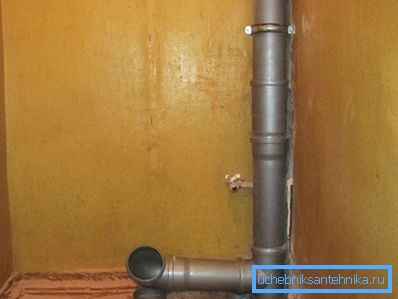
The shape and length of the fan pipe is not regulated, so its parts can dock at different angles, but the material for the ventilation exhaust can only be plastic and cast iron. The main installation condition is the same material for the sewer and sewer pipe. All parts and connections should be uniform in composition, then the ventilation duct will function without interruption.
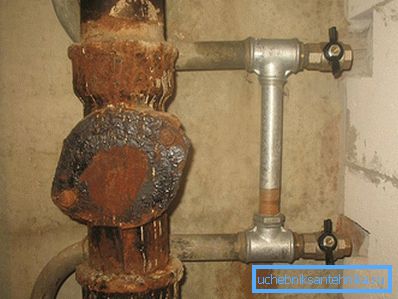
Cast iron has many drawbacks: heavy weight, a tendency to corrosion and the appearance of deposits, installation complexity and high cost. The joints of such pipes are difficult to make tight and they often miss the smell. If possible, it is replaced with plastic even during the installation of the sewer system. Polyvinyl chloride (PVC) and propylene (PP) pipes have become popular types of polymer products. These alloys are resistant to chemicals, have a smooth surface that provides high throughput, they are durable and tough, not afraid of mechanical impact.
Cases of mandatory installation of ventilation for sewage systems:
- The house has two floors and more or a large number of plumbing on the same floor.
- The presence of a pool and jacuzzi that can instantly create a large amount of draining water.
- Use in the sewer system of risers with a cross section of 50 mm.
- The location of the drain hole or septic tank closer than 5 m to the apartment building.
- With an insufficient slope of the outgoing sewer pipes.
Preparation for installation

Before installing ventilation, you must buy pipes and fittings. The material of the pipe is chosen the same as that of the sewer, and the diameter should be equal to the cross section of the main riser, usually it is 110 mm. The fan pipe should start in a warm room, for example, in the toilet, and end above the roof of the house. The transition from heat to cold will create cravings in the ventilation duct. Performing an independent installation, it is necessary to consider the basic rules for placement of the fun pipe:
- distance from balconies and windows - 4 m;
- you should not close the pipe caps or decorative elements, it leads to the formation of condensate;
- height above the roof is from 5 m;
- It is strictly forbidden to combine the fan pipe with the ventilation of the building or the chimney;
- if the outlet of the nozzle is located next to the ventilation pipe, it should exceed it by 15 cm;
- in the case when the pipe is bred through the wall, it is necessary to protect it from damage when the melting snow falls.
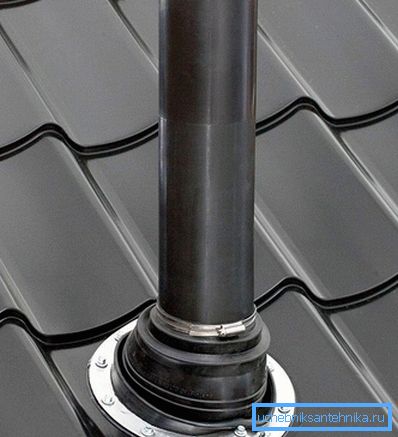
If one or two risers are installed in the house, then they are combined and the fan pipe is brought to the roof. In the case of a large number of sewer risers should not do a few hoods. In this case, vacuum valves are installed on a part of the system.
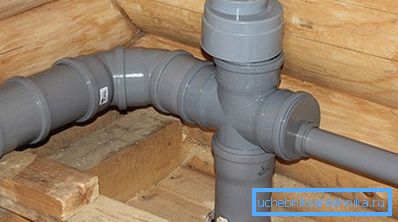
The device consists of a rubber seal that is sealed onto the riser, and a spring. At the moment of pressure drop, the valve opens and air from the room gets into the sewage system, after leveling the spring locks the device.
Installation of fan elements
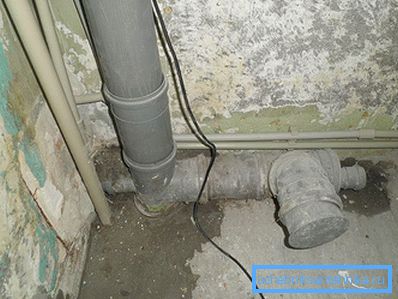
Before installing the fan pipe, the old riser is dismantled. The main part of the pipe must be installed directly, and the lateral bends are connected to it. Installation begins from the foundation, where the ventilation riser is connected to the external part of the sewer. Fastening to the wall is made of metal clamps. In each toilet set tee O 110 mm for connection to the toilet. If necessary, heat insulation on the fan pipe is put on the case of Penoizol. The place of passage of the overlap is filled with building foam so as not to create vibration. Creating noise insulation is important when installing a funnel pipe. To reduce the sound of pouring water, wrap the Isotone riser with PE foam sold in roll. On the pipe it is fixed with reinforced tape.
After installing the fan pipe and creating sound insulation, you will not be disturbed by the sound of merging water and unpleasant odors.
Video
This video about the fan stand tells you why this element of your house should be given close attention:
This video shows how to get the sewer riser onto the roof: